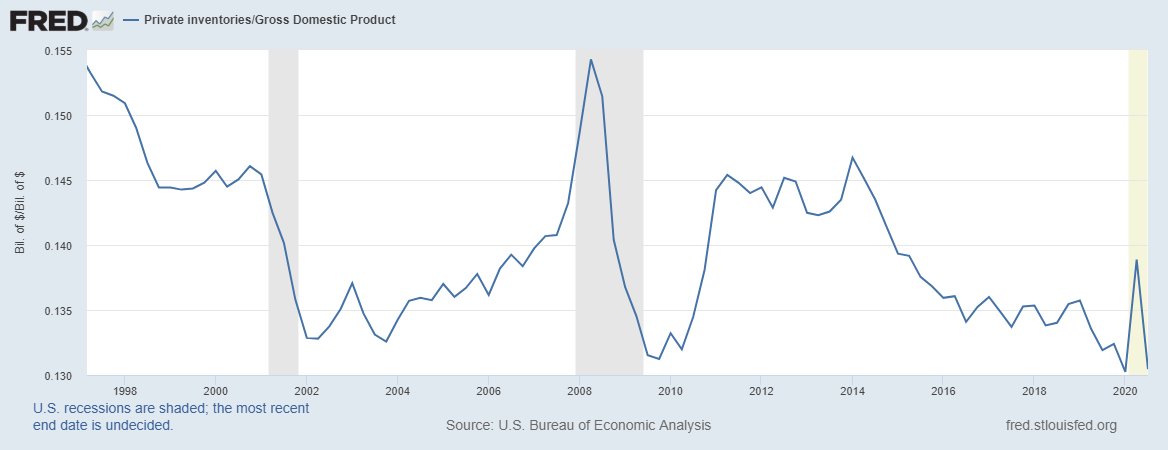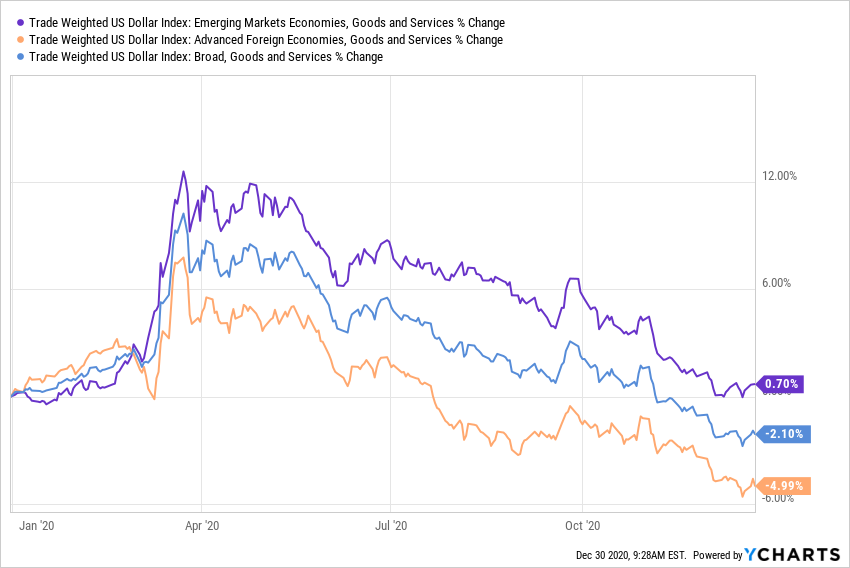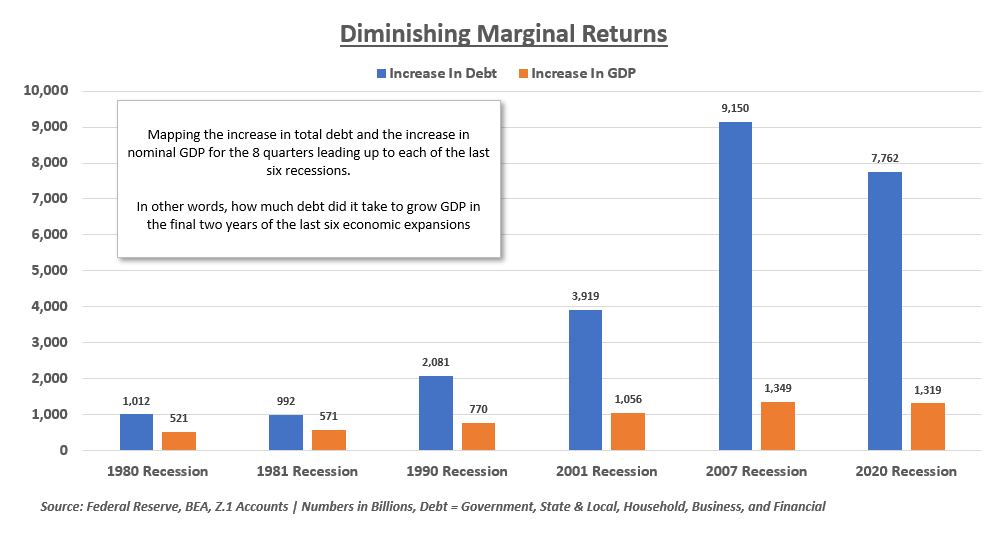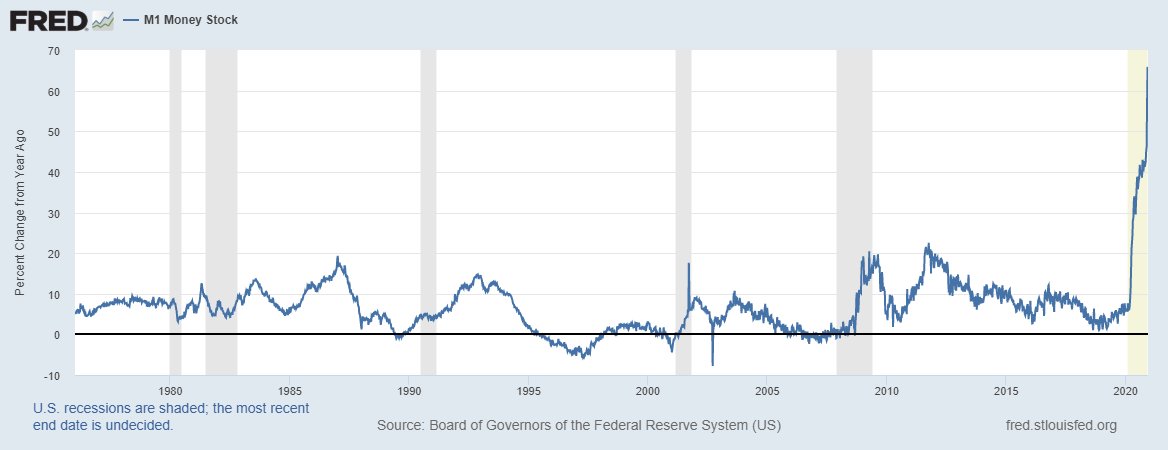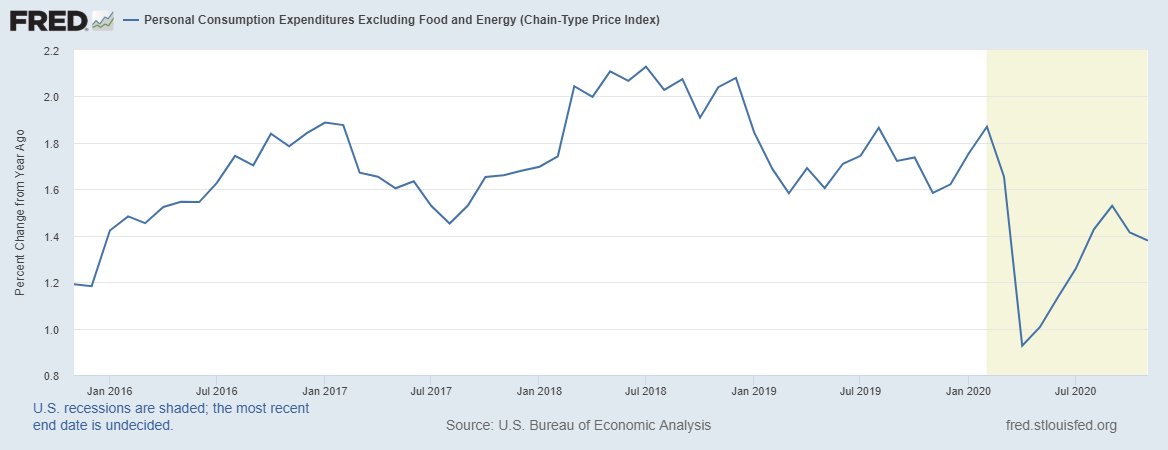
It is difficult to change a 10-year trend.
Long-term expectations do not change as frequently as daily market fluctuations would make it seem.
A quick update on Treasury rates through the lens of the DKW model
*As of Dec. 31*
1/
Long-term expectations do not change as frequently as daily market fluctuations would make it seem.
A quick update on Treasury rates through the lens of the DKW model
*As of Dec. 31*
1/
In previous threads, I made the distinction between long-term secular trends in growth and inflation and shorter-term (2-6 quarters) trends in nGDP growth
2/
https://twitter.com/EPBResearch/status/1346101439756570625?s=20
2/
Right now, the long-term trends are unaltered because long-term trends just don't change that fast but we have a very strong cyclical upturn in the economy, centered primarily on the shift to goods consumption bolstering the manufacturing sector and industrial commodities.
3/
3/
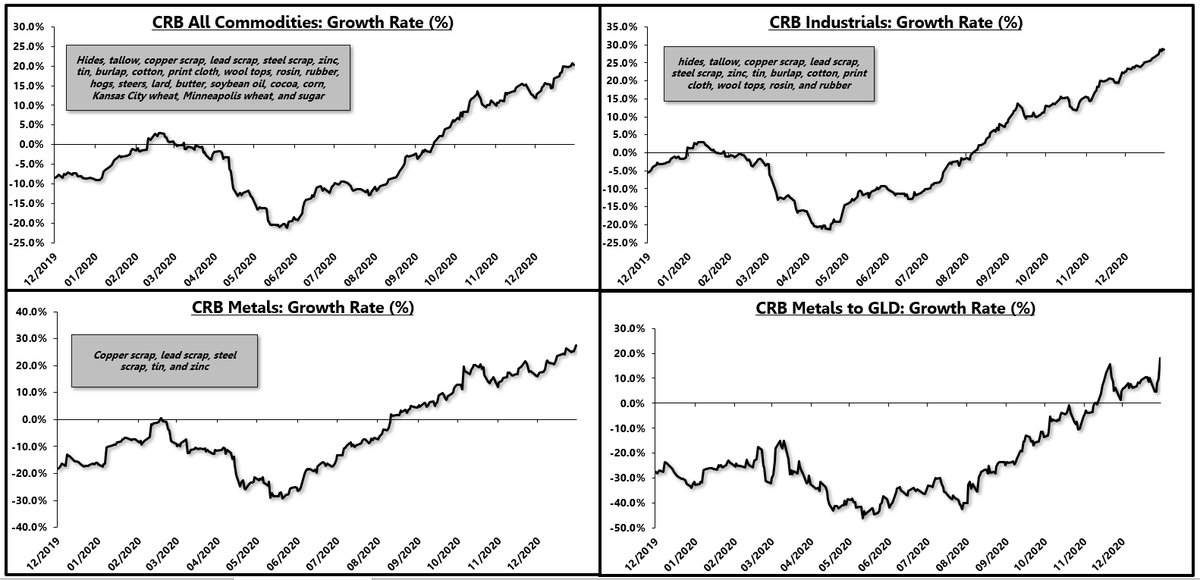
As long as the industrial sector continues to roar, TSY rates will have an upward bias as rates generally follow the trend in nGDP growth
A 10yr TSY has longterm expectations embedded in the rate so several qrters, while important, won't necessarily change the longterm trend
4/
A 10yr TSY has longterm expectations embedded in the rate so several qrters, while important, won't necessarily change the longterm trend
4/
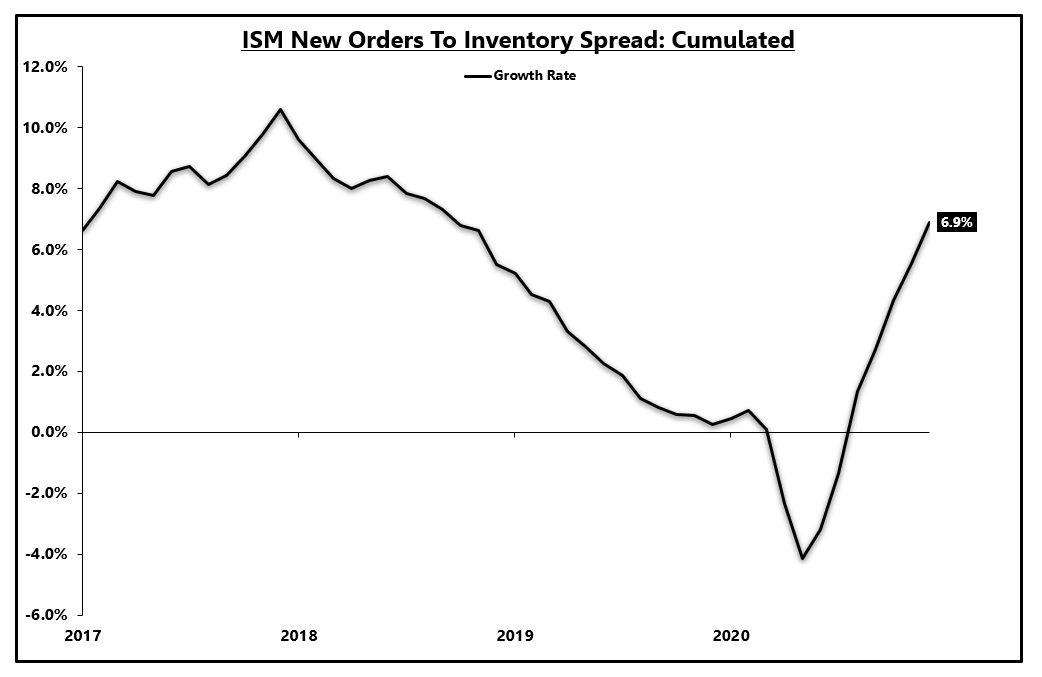
This is confirmed by the Dec update to the DKW model which breaks down *actual* inflation expectations, the expected real short-term rate (real growth), term premium, liquidity premium etc.
The DKW model is one of many models that is useful but has many limitations.
5/
The DKW model is one of many models that is useful but has many limitations.
5/
As of Dec 31, according to the DKW model, inflation expectations are directionally rising, in line with the industrial upturn, but have only increase ~12bps from the summer low.
It is hard to alter a long-term trend with just a couple of quarters.
6/
It is hard to alter a long-term trend with just a couple of quarters.
6/

Real growth expectations remain on the floor in the DKW model as (again) a transitory upturn in growth won't alter the 10-year average rate of growth all that much.
7/
7/

So what is causing the bulk of the move in Treasury rates?
The real term premium.
Expectations for massive fiscal spending rightfully won't alter the economy's long-term growth prospects but do place extra risk on duration in the near term.
8/
The real term premium.
Expectations for massive fiscal spending rightfully won't alter the economy's long-term growth prospects but do place extra risk on duration in the near term.
8/

Adding actual inflation expectations and the real ST rate expectations gives what I call the "fundamental" drivers of TSY rates which have increased cumulatively about 14bps since the summer.
This makes sense with the trend in nGDP growth.
9/
This makes sense with the trend in nGDP growth.
9/

In short, the long-term trends that have caused TSY rates to decline for decades are still in place.
Weaker growth and lower inflation over the long-run will depress the risk-free rate.
In the short-term (2-6 quarters), you have to follow the direction in nGDP growth.
10/
Weaker growth and lower inflation over the long-run will depress the risk-free rate.
In the short-term (2-6 quarters), you have to follow the direction in nGDP growth.
10/
Once this manufacturing upturn starts to fade (no signs yet) TSYs will be a great buy again as the next cyclical downturn in the economy will push the long-end to the zero-bound.
11/11
11/11
@R_Perli has more timely updates on this model and can perhaps shed some light on the January move in rates so far.
• • •
Missing some Tweet in this thread? You can try to
force a refresh



